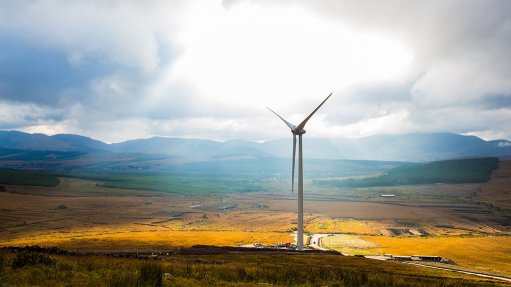
The extension of South Africa’s renewable energy development zones (REDZs) to areas where coal jobs are at risk, but where grid capacity is available, represents a “great opportunity” to connect new renewable-energy generators while also supporting a just transition for coal workers, a senior official at the Independent Power Producer Office (IPPO) argued on Monday.
Speaking during the virtual opening of the 2020 edition of Windaba, IPPO head of technical Pervelan Govender noted that government had hitherto not drawn on the REDZs framework, through which 11 geographical areas, including the coal region of Emalahleni, in Mpumalanga, had been earmarked for the clustering of wind and solar plants.
That framework, Govender said, could prove useful in light of prevailing grid constraints, which impact the ability to evacuate renewable electricity, and government’s aspiration to ensure that coal workers and communities were not left behind by the energy transition.
“The additional opportunity that has materialised is the REDZs, which accommodates for a site in Mpumalanga . . . We haven’t actually utilised that yet, but I think this is a great opportunity to utilise it,” he said.
This view received support for South Africa Winder Energy Association chairperson Mercia Grimbeek who argued that, despite the wind resource not being optimal in Mpumalanga, an opportunity existed not only to tap available grid infrastructure, but also to develop the province as a manufacturing hub for wind components.
Likewise, Danish ambassador to South Africa Tobias Elling Rehfeld argued that, while Mpumalanga would not be South Africa’s first choice from a wind-resource perspective, the availability of the grid infrastructure, together with the socioeconomic opportunity to sustain livelihoods, could alter the “societal calculations”.
“From a purely scientific and technical point of view, the wind resources may be better in other parts of South Arica, but from green and just-transition perspective . . . the slightly reduced production potential in Mpumalanga is a price worth paying to ensure that the green transition will be a winning formula for the society as a whole,” Elling Rehfeld said.
POLICY TAILWIND
Crucially, though, the public policy and regulatory environment, which had hampered the deployment of renewables since 2014, had turned favourable again.
The recent gazetting of a Ministerial determination opening the way for the procurement of 4 800 MW of new wind capacity over the coming three years, in line with the Integrated Resource Plan of 2019 (IRP 2019), had been followed by indications that the fifth bid window of the Renewable Energy Independent Power Producer Procurement Programme could be launched by year-end.
By 2030, the IRP 2019 indicates that wind will comprise 17 742 MW of the country’s installed electrical capacity, representing 22.53% of the overall installed base and 17.8% of the electrical energy produced yearly by that date.
Govender said the formulation of the IRP 2019 and the National Energy Regulator of South Africa’s concurrence with the Ministerial determinations policy certainty had be “firmed up”.
The focus was, thus, shifting to changes in the system, including the lower renewables technology costs and increased generator size, as well as reduced availability from Eskom’s coal fleet, a portion of which would be decommissioned over the coming decade.
In addition, the IPPO was reassessing the minimum thresholds for various socioeconomic spinoffs, from localisation and ownership through to skills development and poverty alleviation.
“During the previous decade there has been a [renewables] uptake for half the decade and it had been fairly quiet for the next half of the decade. But the next decade is looking very promising and we can all look forward to working together to achieve the objectives of the IRP and the prosperity of South Africa.”